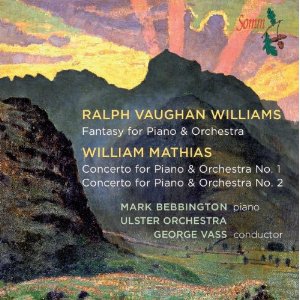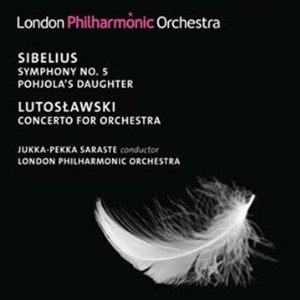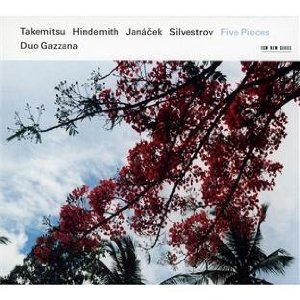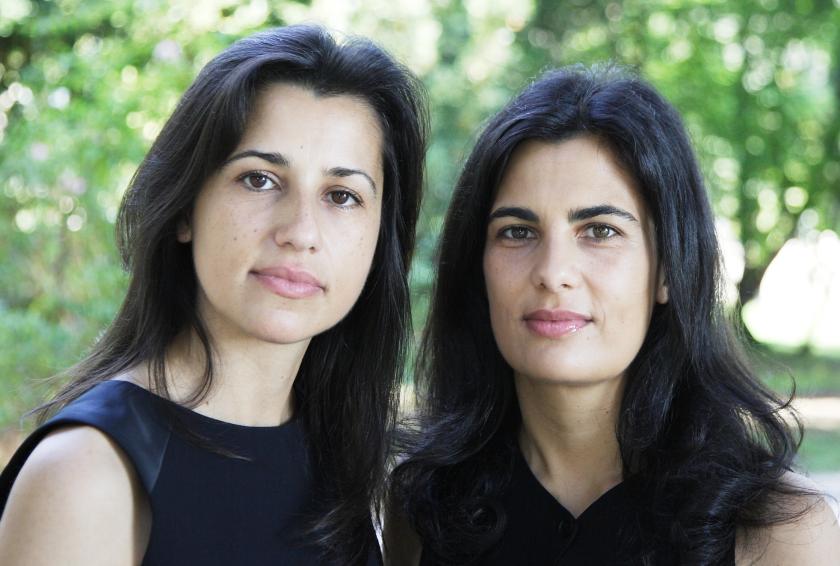
Welsh composer William Mathias’s first two piano concertos are the most enjoyable things on this disc. The earlier work was written in 1955 while Mathias was still a student, winning him a scholarship to study composition with Lennox Berkeley in London. It’s a really engaging piece – spiky and rhythmically interesting. Granted, it’s not as challenging as anything by Bartók or Stravinsky, but it’s acerbic, exciting and striking. There’s a crystalline clarity to Mathias’s orchestral writing, which is also heard in the less abrasive Piano Concerto No 2. It’s more melodic and the harmonic language more lucid. Rhythmically it’s as playful as its predecessor, and there’s an abundance of well-developed material displayed over four short movements.
Vaughan Williams’s Fantasy was completed in 1902 and revised two years later. The piece was never published and the composer never referred to it again. It’s recognisably Vaughan Williams – several thickly scored, slightly ponderous themes couldn’t have come from anyone else’s pen. He was a more cosmopolitan composer than he’s often given credit for; there are hints of Brahms, Grieg and Rachmaninov here. And the final, glowering chord offers a thrilling pay-off. Mark Bebbington’s muscular playing does the work proud, and he’s well accompanied by George Vass and the Ulster Orchestra. But it’s the Mathias concertos which I’ll return to more often.

We don’t need another recording of Sibelius’s Fifth Symphony, but his short tone poem Pohjola’s Daughter is very well served here. Jukka-Pekka Saraste’s 2008 RFH performance is electric – fast and exciting where it needs to be, with the darkest, most sinister of openings. It’s a compact thriller of a work, its tragic narrative drawn from Finnish folk tales. Saraste is alert to every narrative twist – blink and you’ll miss something, as with the huge brass climax three minutes in which abruptly dissolves into nothingness. After Henri Sigfriddson’s piano performance, it’s good to hear the Fifth Symphony in its regular orchestral colours. Saraste’s urgency can undersell the cragginess – I like a bit more grit in Sibelius’s extraordinary, dissonant transitions, but there’s real relief when the first movement’s Allegro moderato swings into life. The LPO’s timpanist is heroic throughout.
Lutosławski’s Concerto for Orchestra makes an unusual coupling. Saraste’s reading is sleazier, grimier than I’ve heard it, moving with a menacing swagger. I’ve never come across a bad performance of the piece, though this one’s toughness makes it feel more forbidding than it should. Saraste’s phrasing of the trumpet theme in the second movement’s middle section is unusual, and suggests that he’s trying to mimic the speech inflections of the folk song which Lutosławski used as his source material. The epic three-part finale is tautly paced and very exciting. It must have been overwhelming to hear live, but Saraste isn’t always alive to the music’s subtext, with the return of the chorale theme sonically thrilling but emotionally a little flat.
Watch Jukka-Pekka Saraste conduct Sibelius's Fifth Symphony

The opening work on this disc is one of those things you can’t believe you’ve never heard before. And then you press repeat, and listen to it, grinning, again and again. So French – could it be an early work by Messiaen? Welcome to Distance de fée by the Japanese composer Toru Takemitsu – written in Tokyo in 1951. It’s the delicacy, the softness of the piano accompaniment, the glowing major chords giving meaning to an angular, questioning solo violin line. Without gushing too much, this is one of the most beautiful things I’ve heard all year. The Italian Gazzana sisters follow it with Hindemith’s brief 1935 Sonata in E. There’s less intractable counterpoint than one expects from this source, and these players bring out Hindemith’s underrated melodic gift. This is another lyrical piece, premiered in Switzerland by a violinist forced to leave Germany when the Nazis came to power.
Hindemith the string player had given early performances of the 1914 Violin Sonata by Janáček. Wholly characteristic of this composer, the work’s four brief moments explode with vitality. Violin and piano don’t coexist happily. At times it’s as if the soloist is sabotaging the accompaniment, as in the opening of the closing Adagio – the piano’s folky ruminations sneered at by a scowling fiddle. What’s attractive is how these players don’t let the piece degenerate into an aggressive stand-off. The disc ends with the Ukrainian composer Valentin Silvestrov’s Five Pieces, dating from 2004. Touching, melancholy studies in nostalgia, they don’t outstay their welcome and they’re performed with exquisite understatement. Superb.














Add comment